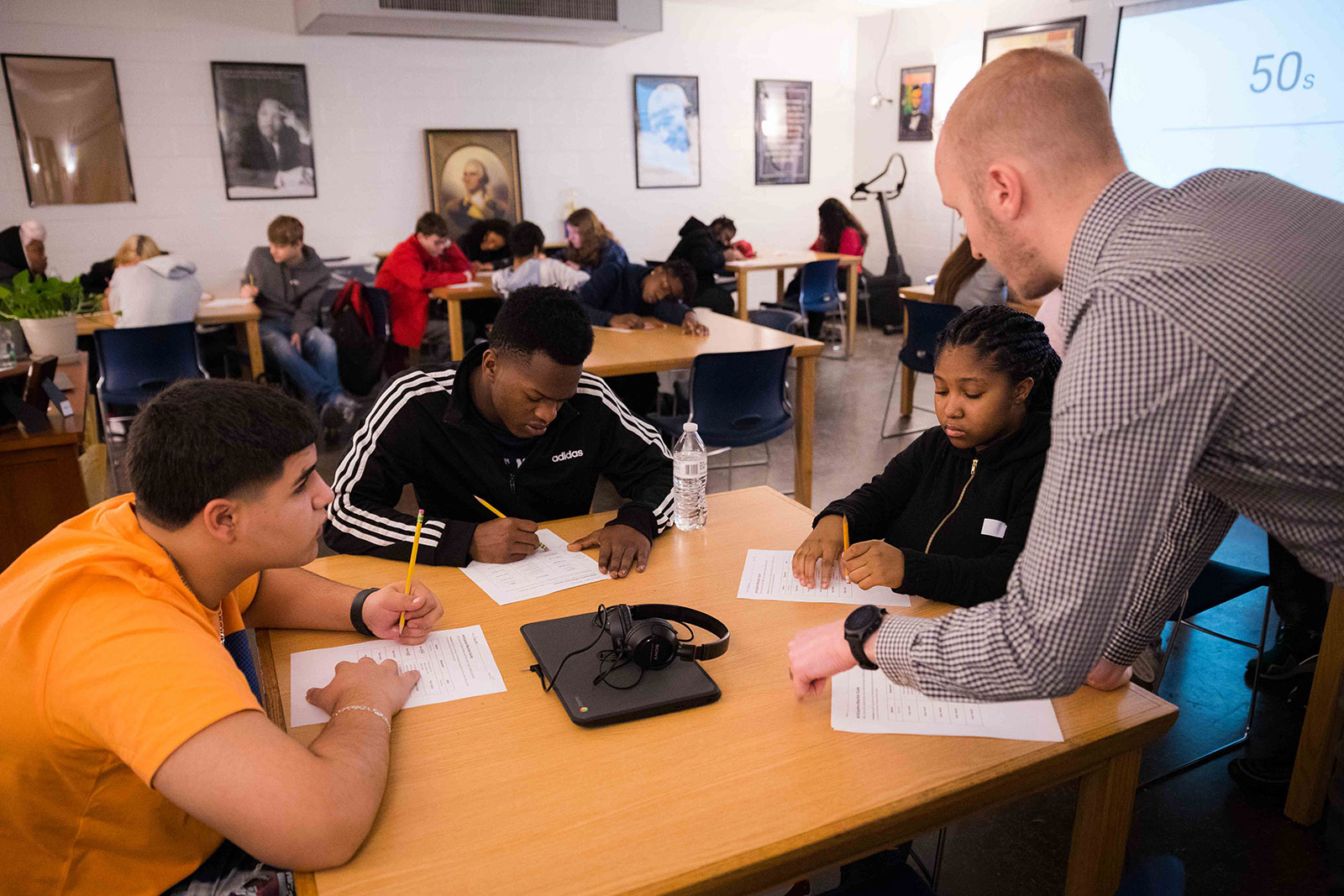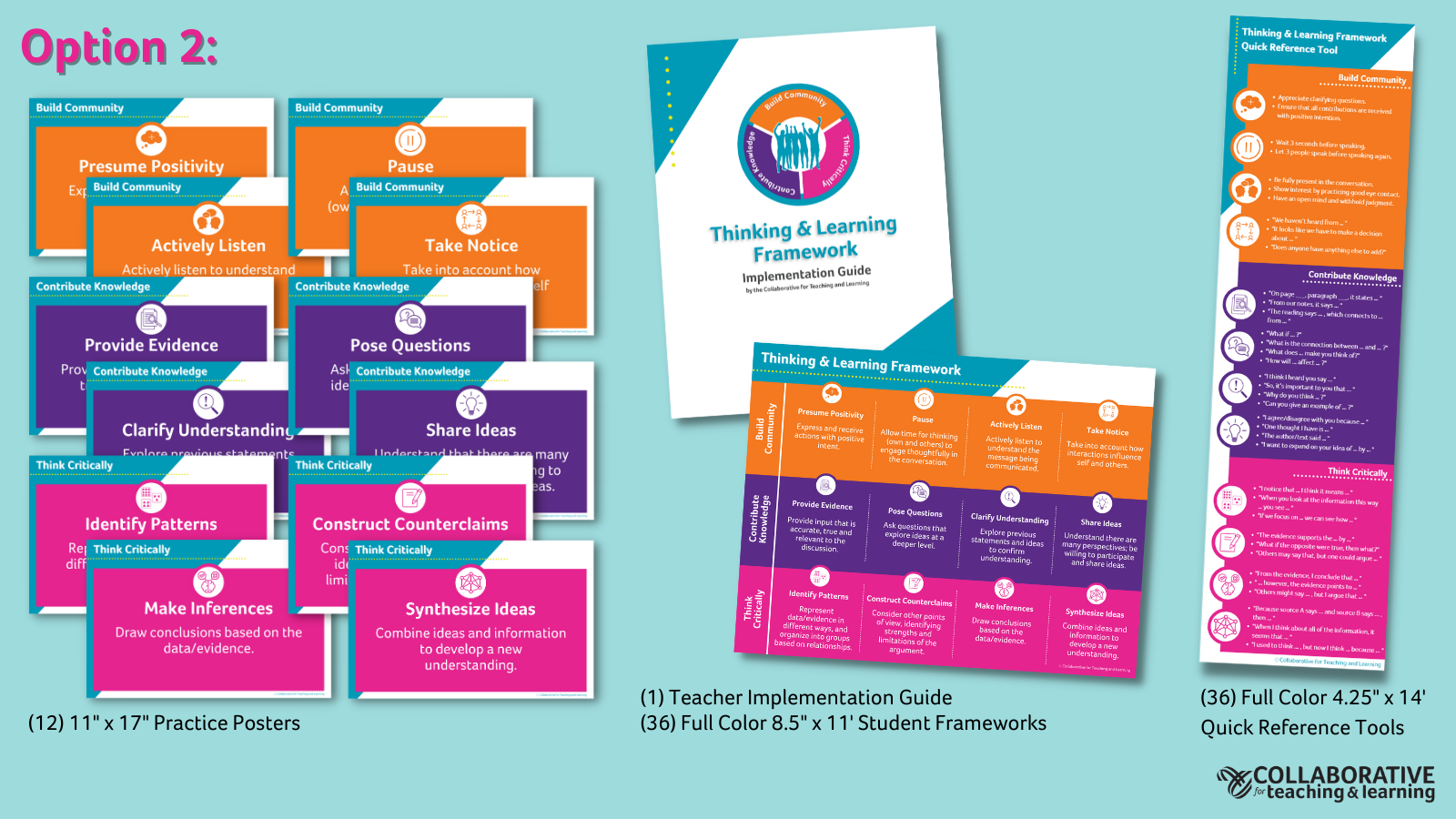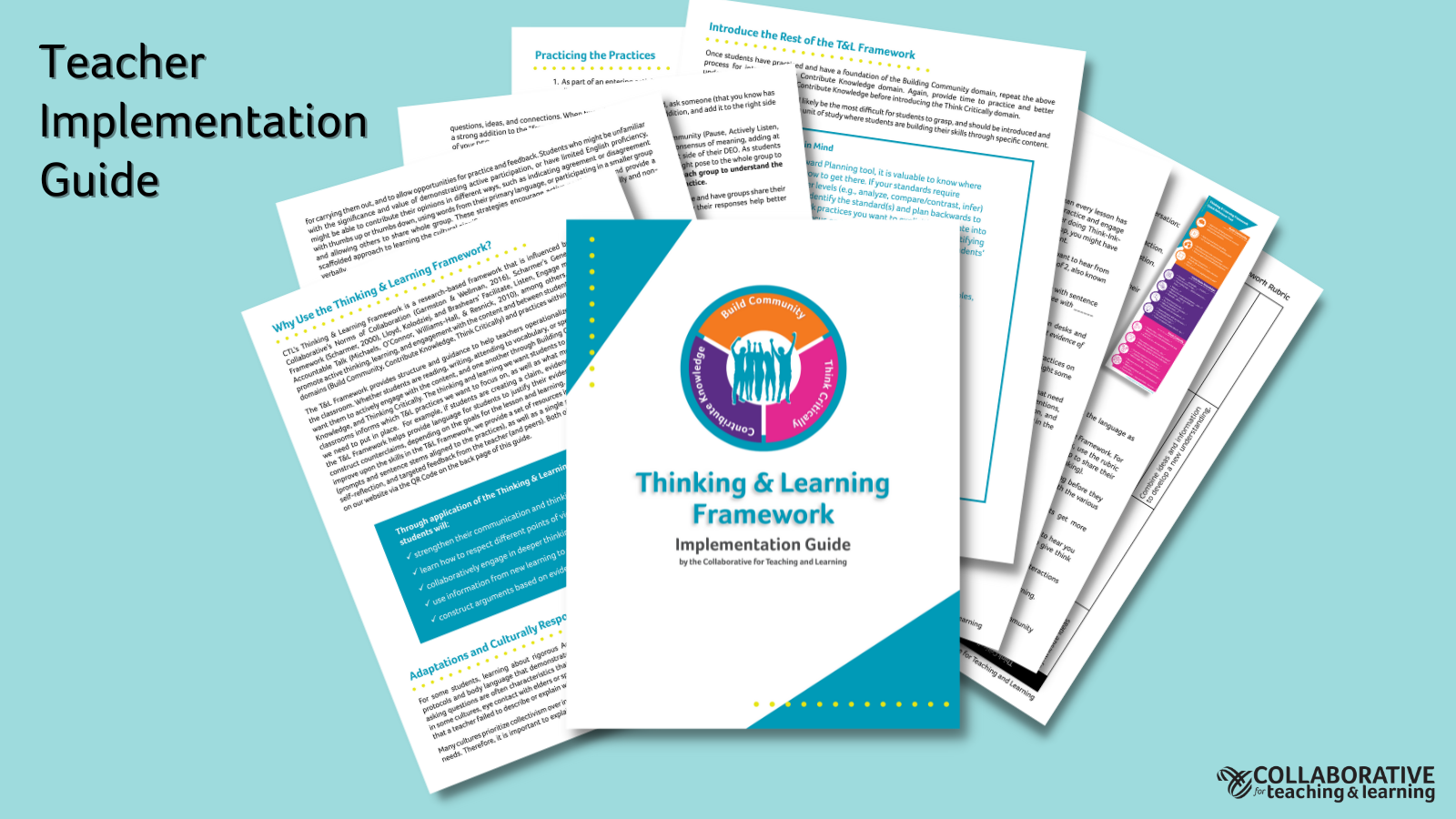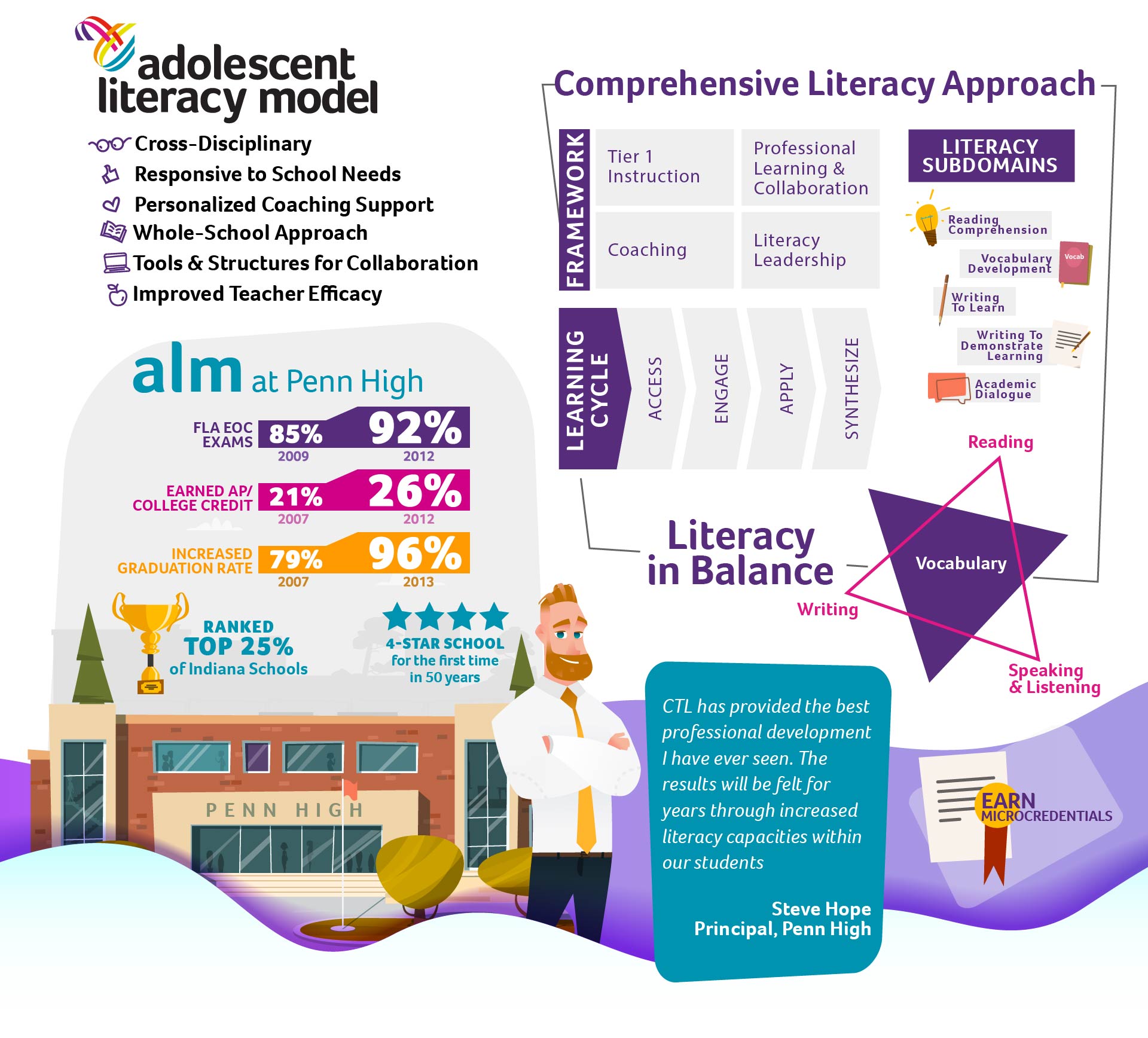Adolescent Literacy Model (ALM) is a comprehensive literacy approach designed for middle and high school classrooms as a way to integrate literacy in all content areas. CTL focuses on these five subdomains:
1) Academic Dialogue
2) Vocabulary
3) Reading Comprehension
4) Writing to Learn
5) Writing to Demonstrate Learning
Through professional learning and personalized coaching, educators learn ways to improve student engagement, content knowledge, and collaboration through rigorous instruction using ALM tools and structures. These include instructional strategies that are to be intentionally selected to align with academic purposes. ALM’s approach also encourages schools to develop a literacy leadership team that encompasses teachers from a variety of content areas.
the ALM advances:
- Tier 1 Instruction aligned with your state or national Academic Standards and based in content literacy, where literacy strategies are applied in all subject areas to increase student engagement and deepen learning
- Access to content learning for all learners through the regular use of content literacy
- Strategies which take advantage of the various facets of literacy: Vocabulary Development, Reading Comprehension, Writing to Learn, Academic Dialogue, and Writing to Demonstrate
- Teacher as instructional-designer, selectively integrating curriculum resources and technology, to enhance student opportunities to process and express content learning individually and collaboratively
- Leadership development, including training and support for principals and the creation of a literacy leadership team to encourage, support, and monitor progress
- A school instructional culture of high achievement through literacy development based in an environment of continuous improvement and growth-mindset

Thinking & Learning Framework
CTL’s Thinking & Learning Framework is a research-based framework that is influenced by the Thinking Collaborative’s Norms of Collaboration (Garmston & Wellman, 2016); Scharmer’s Generative Dialogue Framework (Scharmer, 2000); Lloyd, Kolodziej, and Brashears’ Facilitate, Listen, Engage model (2016); and Accountable Talk (Michaels, O’Connor, Williams-Hall, & Resnick, 2010), among others. It is designed to promote active thinking, learning, and engagement with the content and between students through three domains (Build Community, Contribute Knowledge, Think Critically) and practices within each domain.
The T&L Framework provides structure and guidance to help teachers operationalize rigorous practices in the classroom. Whether students are reading, writing, attending to vocabulary, or speaking and listening, we want them to actively engage with the content, and one another through:
- Building Community,
- Contributing Knowledge, and
- Thinking Critically.
The thinking and learning we want students to do with each lesson in our classrooms informs which T&L practices we want to focus on, as well as what literacy strategies, mediating steps and support we need to put in place. For example, if students are creating a claim, evidence, and reasoning response, the T&L Framework helps provide purpose and language for students to identify key content from a source, justify their evidence, identify patterns, and/or construct counterclaims, depending on the goals for the lesson and learning. The Framework provides needed support to teachers to identify the kinds of strategies they choose, to support student thinking. To help students practice and improve upon the skills in the T&L Framework, we provide a set of resources including a Quick Reference Tool (prompts and sentence stems aligned to the practices), as well as a single point rubric that can be used for self-reflection, and targeted feedback from the teacher (and peers).





